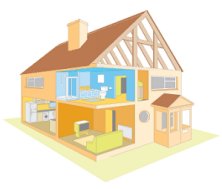
We have already covered no cost ways to reduce energy use in your home, so now that you are have all this extra money you are not spending on your utility bills burning a hole in your pocket, its time to start thinking about spending some of that money on ways to reduce energy use.
This list was compiled by Larry Harmon, from Air Barrier Solutions, and Peter Talmage, from PE Energy and Design. Both men are very knowledgeable about home energy use and they put on a great talk about easy ways to reduce home energy use at this years NESEA Building Green 07.
Most energy efficiency improvements pay for themselves in savings very quickly. You can also get some tax breaks to help you pay for them. So here in no particular order are the top ten ways to reduce energy use in your home.
1. Start with diagnostics:
You need to establish a baseline for your home. This lets you see how far you have come, as well as expose the trouble areas that need to be tackled first. There is no point in replacing the insulation in the attic if you already have enough. There are three types of diagnostics that you should make sure are done.
- Blower Door Testing
- Infrared Scan
- Combustion Safety Testing
Blower door testing:
When you preform a blower door test you set up a large fan in a door (hence the name) and you pressurize the home using a known volume of air. Blower door testing determines several things. It can tell you where your building is leaking air. This is important because if air is leaking out, so is heat/cold, conversely if air is leaking in so is cold/heat. A blower door test will also tell you if your home is sealed up too tight. Some areas of the home need to be properly vented. Bathrooms for instance need proper venting to prevent mold. The blower door
test is also a good tool to see if that guy you paid to seal up your attic really did his job or not.
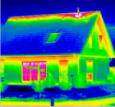
Infrared scanning:
Infrared scanning relies upon very cool and very expensive infrared cameras, that can give the operator the ability to “see” exactly where your home is leaking air. The test is dependent on the operators skill and the kind of interior finishes you have in your home (foil back insulation and other kinds of finishing can interfere with the camera). Infrared scanning should be done in conjunction with a blower door test for maximum effect.
Combustion safety testing:
Some combustion appliances (gas stoves, gas water heaters, oil and gas furnaces etc) require the correct pressure inside and outside your home in order for them to vent properly. They rely on chimneys to take the combustion fumes out to the outside. If you change the air flow patterns of your home you may create negative pressure and cause these appliances to vent into the home. This is obviously not good. This test needs to be preformed before AND after you make changes to the home.
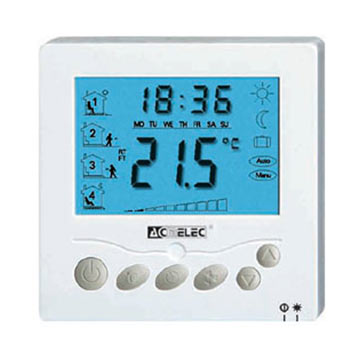
2. Install a programmable thermostat:
If you reduce your hose temperature from 70 degrees to 60 degrees for 8 hours each day you can reduce your heating load by 10%. On average using a programmable thermostat can save you $150+ a year. At an average cost of 20 dollars to purchase one, this is a no brainer. Not all heating systems work well with a programmable thermostat. Oil and gas furnaces will see the best result, radiant floor heating should be set at a constant temperature and left at that temperature only changing the settings gradually.
3. Air Seal Your Home!!!:
Air sealing simply means closing all the gaps, cracks, and leaks. There are a plethora of reasons to have your home sealed up it can, stop drafts and reduces noise, eliminate pests such as cluster flies and ladybugs and can reduce the size requirements of your heating/cooling system to name a few. Some tips for air sealing. Seal the top of your home and bottom of your home first, then move towards the walls. High density cellulose blown into side walls also helps dramatically. Always air seal before insulating attics, if you don’t you can have very bad moisture problems. Remember SEAL FIRST, INSULATE SECOND. Your diagnostic tests can help you determine where the gaps cracks and leaks are, and what your potential savings are.
4. Change your lights:
Compact fluorescent lamps use 1/4th of the electricity of an incandescent lamp of the same light output and last ten times as long. There are sizes and shapes to fit almost any existing light fixture. A $.75, 14 watt CFL that is used for 6 hours a day will save you about $15 a year over a 60 watt incandescent lamp. That is a risk free return of over 2000%!
5. Insulate the exposed portion of the foundation:
If you have an exposed portion of foundation it is constantly, slowly, leaking. It is allowing heat to escape all winter, and heat to get in all summer. Adding 2 inches of XPS foam to the top 24 inches of an uninsulated 36X24 foot foundation heated at 55 degrees can save 52 gallons of heating oil per year in the Boston area. At $2+ a gallon for heating oil this improvement will pay for itself in the first winter.
6. Install high efficiency domestic hot water:
New hot water heaters can have efficiency ratings above 90%. It is very likely that the home you live in has a rather old, rather inefficient hot water heater. There are lots of options, from storage from a HE boiler, to Instantaneous heaters, to solar thermal options. If you live in a warm climate you can meet almost all of your domestic hot water needs with a simple and cheap solar thermal system. If you live in a cold climate you can meet 80%+ of your DHW needs with that same simple and cheap system.
7. Insulate your walls:
Insulating your walls can save you hundreds of dollars on heating and cooling costs each year. Blown in high density cellulose insulation can easily be added to existing walls.
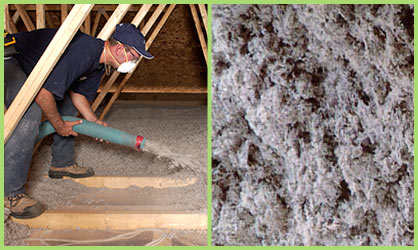
8. Insulate your attic:
Open attics are easy to insulate. Remember always air seal first! Cellulose insulation can be blown in directly over existing attic structures and provides a very cost effective way to add a large amount of insulation fast. Insulating the attic will help people in both warm and cool climates save money because you will not be spending more money to heat/cool that attic space as well.
9. Switch to high efficiency heating:
High efficiency condensing boilers can operate at up to 95% efficiency. Their sealed combustion system ensures easy and safe installation. With circulators and expansion tanks included they can replace an existing boiler with little modification of the existing heating structure. An average installed cost would be around $5,000. Solar thermal systems can also be used to supplement or even replace most heating systems.
10. Get new appliances:
Replacing old appliances with units that have the energy star label means less energy use. Typically they also run quieter and last longer. Energy star appliances can include, refrigerators and freezers, light fixtures, dish washers, clothes washers, room air conditioners, dehumidifiers, ceiling fans, computers and heating devices. Spending an extra $50 – $100 dollars can save you thousands over the life time of the appliance. If you replace your old refrigerator you can often save 70% of more energy.
These ten changes will radically reduce your energy usage.
So what about windows? Replacing old windows may not be the most cost effective way to save energy use in your home. Often air sealing existing windows will have a a greater payback. You will need to find replacement windows for about $250 per window in order to to have a payback period that makes it worth purchasing the new windows. If you do find them cheap enough, poor installation can make new windows worse than old ones. Single pane windows with a storm window are almost the efficiency equivalent of much more expensive thermopane windows. So in a nutshell your diagnostic tests will tell you if your windows only need a little more sealing, or if they need to be replaced.
Finally remember you can always go solar! After you have improved the efficiency of your home it becomes much more cost effective to use clean solar technologies. For every dollar you spend on efficiency measures you will lower the cost of your solar system by 3 to 5 dollars (because of reduction in the size system you will need). You will want to consider passive solar options, like sun spaces, and thermosyphon hot air heaters. Active solar devices like solar hot air heaters, solar DHW heating and solar thermal heating of the home are also very efficient. Finally solar electric systems can help offset large amounts of your average electricity bill.
In the Boston area every square yard of hot air collector can offset an average of 1.5 gallons of heating oil per month. A set of four 3′ by 7′ collectors will supply the energy equivalent of about 21 gallons of heating oil per month. And a 2kw solar electric array will produce about 180kwh per month. Credits and incentives can reduce the cost of an $18,000 to as little as $5,000 (in Massachusetts). With net metering and the value of green tags the electricity generates is presently worth about $42 per month.
Good luck, and have fun saving all that extra money!
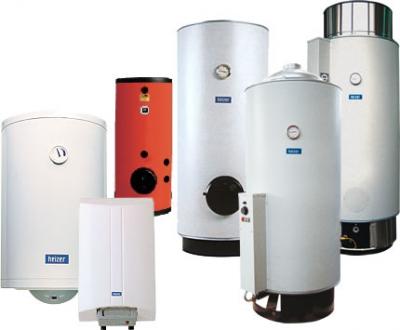
Just beware that the new bulbs contain mercury. Do not throw them !